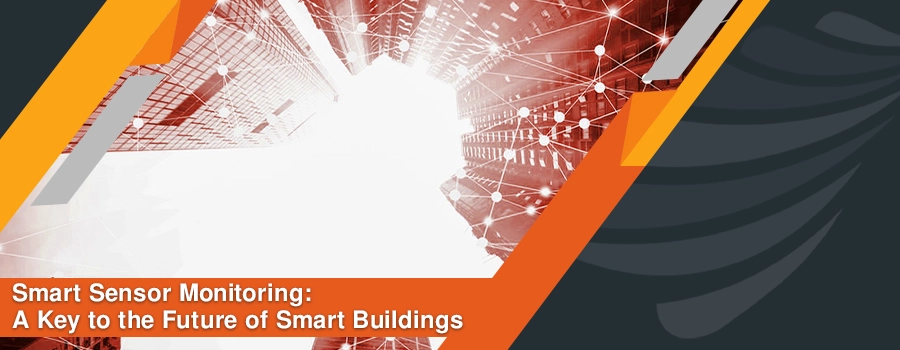Do you need assistance in maintaining appropriate temperature or humidity levels in your home or office?

Choosing the best sensors, ensuring their health, and liaising with multiple vendors might be challenging. Moreover, managing and balancing deployed sensors to ensure their optimal performance and contribute to overall comfort at home or work could be daunting tasks you encounter daily. But worry not.
This blog aims to guide you on managing and monitoring your smart sensors on a single platform, transforming your concerns into an effective strategy for managing traditional sensor systems in revolutionary smart buildings.
Why Smart Building Sensors Matter
Smart building sensors are specifically designed to collect and monitor data from various aspects of a building, considering its infrastructure and surrounding environment. These sensors employ advanced technology to enhance occupants’ comfort, standards, and safety. Additionally, they aid in reducing greenhouse gas emissions and energy consumption, positively impacting the environment.
Equipped with real-time information, smart building sensors empower building managers to make informed decisions. Hence, the effective deployment and management of smart sensors contribute to sustainability.
Challenges in Building Smart Cities
We all need to manage things smartly. It’s not just about catering to our lifestyle needs but also relying on it to enhance our security and make better decisions. As we turn towards smart infrastructure, we select different sensors based on applications and interests. However, choosing the best sensors can be a time-consuming process. Most of our time is spent searching for the best vendors and suitable sensors, creating a busy and obstructive process.
Surprisingly, with the advent of smart sensor monitoring and management solutions like Hive, all your obstacles are addressed. Hive stands as the ultimate smart solution, effectively managing, monitoring, and simplifying various sensors on a single dashboard.
It serves as a platform providing a variety of sensors for your smart homes and buildings while allowing you to leverage collected data for informed decisions. With Hive, all the burdens of sensor management and selection are eased, allowing you to embrace smart living.
16 Common Types of Smart Building Sensors for Deployment
The 16 most common types of smart building sensors that can be deployed to modernize buildings, homes, or workspaces include:
- Humidity Sensor
- Temperature Sensor
- Air Quality Sensor
- Current Monitoring Sensor
- Smoke Sensor
- Motion Sensor
- Pressure Sensor
- Light Sensor
- Waste Bin Sensor
- Leak Sensor
- Security Sensor
- Soil Sensor
- Sun Tracking Sensor
- Parking Sensor
- Elevator Monitoring Sensor
- Pest Control Sensor
The Future of Smart Sensor Monitoring and Smart Buildings
The future of smart city development heavily relies on the deployment of advanced sensors, integrated technologies, and networks. The secret to future smart buildings lies in a unified platform where you can find all solutions, from purchasing sensors to monitoring and managing them.
This platform will act as the central nervous system of smart buildings. Data will be processed and collected from different sensors, aiding in efficient smart integration, management, and monitoring. Currently, such implementations are beginning with solutions like HIVE—a smart sensor monitoring and management solution. Users can monitor and access all deployed sensors, such as temperature, humidity, and pressure, on one platform. This solution supports smart industries and communities by connecting assets, operations/logistics, and services, providing a better connected experience. Implementing such solutions allows you to experience interactive and optimized buildings with just a click.
Final Thoughts
Smart sensor monitoring stands as the ultimate solution for smart city development. Choosing the right sensors can help you experience maximum benefits and ease in your home or office. Integrating sensors with advanced technology helps us make informed decisions, improve our lifestyle, enhance security, optimize operations, and enjoy the beauty of smart cities.



